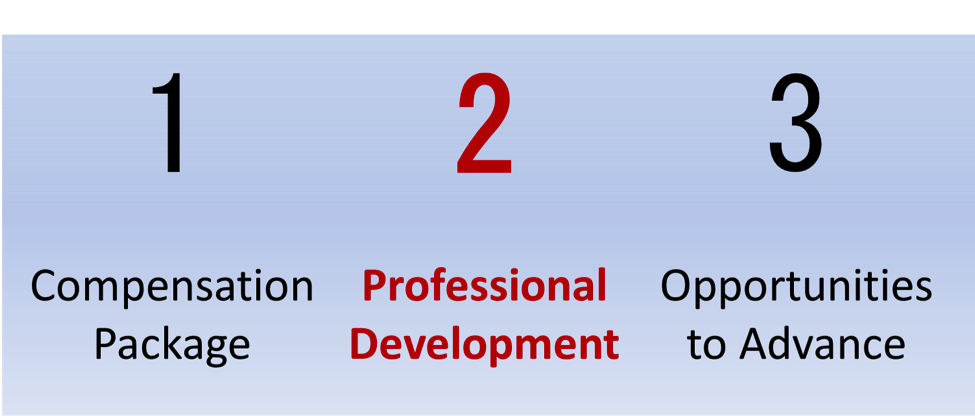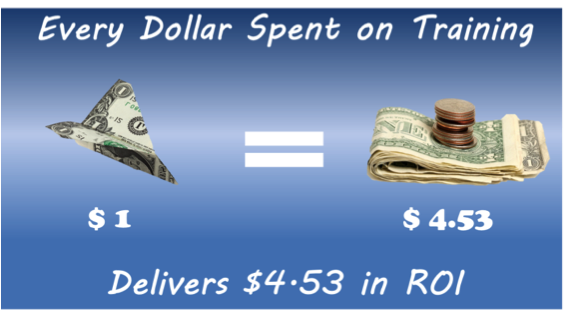Most businesses have a leadership pipeline that aspiring managers move through during the course of their careers. The exact titles and responsibilities may vary depending on the industry, but they generally follow the path illustrated in the Leadership Pipeline figure. Employee development is frequently based on this career path.
 First transition: From Managing Self to Managing Others. Employees just starting out usually spend their first few years in an organization as individual contributors. They contribute by doing the assigned work within given time frames and meeting objectives. When individual contributors demonstrate that they can produce effective results and collaborate well with others, they receive additional responsibilities. If they show they can handle the responsibilities and uphold the company’s values, they may be promoted to first-line manager positions. This is where they start the transition from accomplishing tasks to managing others.
First transition: From Managing Self to Managing Others. Employees just starting out usually spend their first few years in an organization as individual contributors. They contribute by doing the assigned work within given time frames and meeting objectives. When individual contributors demonstrate that they can produce effective results and collaborate well with others, they receive additional responsibilities. If they show they can handle the responsibilities and uphold the company’s values, they may be promoted to first-line manager positions. This is where they start the transition from accomplishing tasks to managing others.
Second Transition: From Managing Others to Managing Managers. This is a critical juncture because these level-two managers select and develop the people who will become the company’s future leaders. At this level, managers must be able to recognize that some individual contributors are not cut out to manage and lead others—and to find a way to continue development for them.
Third Transition: From Managing Managers to Managing Functions. At this point, managers need to learn new communication skills because to communicate with individual contributors, they must now go through at least two layers of management. They also report to general managers who manage multiple functions. They may need to learn about areas unfamiliar to them and think about aligning their unit’s strategy with the business’s overall strategy. They will spend more time working with other functional managers in business-team meetings and less time on purely functional responsibilities.
Fourth Transition: From Managing Functions to Managing Business. Business managers are responsible for the bottom line. They usually have significant autonomy and see a clear link between their efforts and bottom-line results. At this level, managers must learn to reserve time to reflect and analyze, because they must balance short- and long-term thinking.
Fifth Transition: From Business Managing to Group Managing. A business manager values the success of his own business; a group manager values the success of other people’s businesses. A leader at this level must have a global perspective. They must prepare themselves for the bigger decisions, greater risks and uncertainties, and the longer time spans inherent to this leadership level.
Sixth Transition: From Group Managing to Enterprise Managing. This transition is much more focused on values than skills. Enterprise managers must set direction and develop operating mechanisms to know and drive quarter-by-quarter performance that is in tune with longer-term strategy. Enterprise leaders must let go of the pieces, i.e., the individual products and customers, and focus on the whole, i.e., how well do we conceive, develop, produce and market all products to all customers. This role is commonly titled CEO.
What happens if you can’t promote employee? There may be several reasons promotions aren’t an option:
Isolated roles – Highly specialized, support, or remote roles may be difficult to promote.
Hiring and wage freezes – You may not have budget or growth opportunities readily available.
Employees working longer – Rising retirement age, financial constraints, and personal preferences are keeping employees on the job longer, which prevents higher-level positions from becoming available.
Narrowing Hierarchies – It’s a simple numbers game; organization charts narrow to the top like a pyramid. Even if your company is growing, generally only one or two out of every ten people can become managers.
Also consider that many individual contributors are happy in that role and have no desire to manager others. That doesn’t mean they don’t want to grow in their careers. If management is the only path to promotion and raises, you’ll either get the wrong person in the wrong role or you’ll lose valuable employees. You need to find ways to offer employee development when promotions are off the table. Here are three suggestions to get your thoughts flowing.
1 – Consider Lateral Moves
A change in responsibility or role can be just as motivating and refreshing as a promotion. When someone on your team starts to look restless or bored, talk to them about other areas of the business they’re interested in. Maybe they’d like to cross-train with other team members, which would provide growth opportunity to others and foster teamwork as they train each other.
2 – Focus on Skill Growth
Take a look at each team member’s skills. See if there are areas you can work with them to improve. Identify new skills they’d like to learn that could be tied to future opportunities or passion areas. If you don’t have much of a training budget, get creative! Books are relatively cheap. A mentor further along in a similar career could provide guidance and advice. Learning from a peer skilled in the team member’s area of interest could have a big impact. Look for affordable professional meet-ups or conferences they can attend. Free and inexpensive courses from respected institutions like Harvard, MIT, and Sorbonne Universities are available online from sites like EdX and Udemy.
3- Tap into Their Passion
As companies and teams grow, habits and processes can become outdated. Maybe it was the best you could do at the time, but now employees are complaining about them. The next time somebody complains about a broken process or inefficient system, ask if they’d consider taking it on as a project. This feeds their passion because if they care enough to complain, they’re likely motivated enough to fix it. If it works and you can measure the results, it creates a success story to enhance their resume for the future. Fixing a daily hassle provides stress relief for the employee and maybe even the whole team—happier employees are easier to work with!
Passion projects tap into the three keys to motivating employees intrinsically: autonomy, mastery, and purpose:
- Autonomy – They’re in charge of the project, leading to goals you agree on.
- Mastery – They’re building skills by taking on the project.
- Purpose – The project helps them, their team, and the company in a measurable way.
A sense of accomplishment is invaluable to a fulfilled, loyal workforce. Don’t let a lack of opportunities for promotions prevent you from investing in employee development. Get creative and find ways to boost morale, motivation, and employee retention.
To find out more about how to create custom employee development plans, browse the website www.theperformancedifference.com, or email me at laurie@theperformancedifference.com.

In her article, “The New Roles of the Human Resources Professional,” Susan M. Heathfield stated:
Traditionally, the role of the Human Resource (HR) professional in many organizations has been to serve as the systematizing, policing arm of executive management. Their role was more closely aligned with personnel and administration functions that were viewed by the organization as paperwork.
When you consider that the initial HR function, in many companies, comes out of the administration or finance department because of hiring employees, paying employees, and dealing with benefits were the organization’s first HR needs, this is not surprising.
Today’s HR professionals face roles that are evolving at a breakneck pace. To demonstrate value to executive leadership, HR must align with forward thinking practices that adapt to the changing needs of their organization and contribute to company profitability. They must connect with and support employee needs. And they must do this while contending with the changing roles in their own careers.
HR career paths are shifting away from personnel-and-paperwork-administration roles to those of strategic partner, employee advocate, and change mentor.
As a strategic partner, HR professionals contribute to the development and accomplishment of organization-wide business plan and objectives. HR staff members have to think like business people, know finance and accounting, and be responsible for cost reductions and the measurement of all HR programs and processes.
As an employee advocate, HR fosters effective methods of goal setting, communication and empowerment through responsibility. HR helps establish the organizational culture and climate in which employees have the ability, desire, and commitment to serve customers well. The HR manager provides overall talent management strategies, employee development opportunities, employee assistance programs, gain sharing and profit-sharing strategies, organization development interventions, due process approaches to employee complaints and problem-solving, and regularly scheduled communication opportunities.
Crucial change management skills include knowledge about and the ability to successfully execute change strategies. Being able to link change to the strategic needs of the organization minimizes employee dissatisfaction and resistance to change.
Several societal megatrends currently exert influence on HR roles. These trends contribute to the changing HR career path.
What Are Societal Megatrends?
Megatrends differ from trends. They are large social, economic, political, environmental, or technological changes. Once in place, megatrends influence a wide range of activities, processes and perceptions, both in government and in society, possibly for decades. They are the underlying forces that drive trends. Here’s an example of the relationship between megatrends and trends:
Megatrend: Aging population
Trends: Workforce gaps when Baby Boomers retire, buying habits, elder care, and health care
Top Three Societal Megatrends
One of the top three societal megatrends that face HR professionals is closely related to the aging population: diverse generations in the workforce. Soon there will be five generations in the workforce: Traditionalists, Baby Boomers, Generation X, Millennials, and Generation 2020. HR pros will need skills in facilitating communication, encouraging teamwork, and conflict resolution to unite the differing work values and styles between the generations now working side by side.
Another megatrend is the increasingly borderless workforce. HR pros will need to meet the challenges of employees, both full-time and contingent, who work across businesses and boundaries. Challenges include resource management – building on-going relationships with resources, onboarding and workforce training for non-traditional workers, and risk management to thoroughly vet resources.
The third top megatrend is driven partially by the borderless workforce and younger workers’ technology habits: technology challenges, especially changes in IT security and access. Issues include protecting intellectual property and proprietary company information, protecting confidential employee information, and secure access from multiple sources, especially mobile devices and social media. Security from hacking and cyber-crime concerns will continue to grow and transform with workforce and technology changes.
Are You Ready?
Do you think you’re prepared to move up the HR career ladder? Every step requires a shift in responsibilities and focus. You’ll need to adjust your thinking, behaviors, relationships both old and new, and modify your perspective. As if learning new management and technical skills isn’t enough, you’ll also have to maintain relationships and develop new ones at each new crossroad of your career.
adjust your thinking, behaviors, relationships both old and new, and modify your perspective. As if learning new management and technical skills isn’t enough, you’ll also have to maintain relationships and develop new ones at each new crossroad of your career.
We all have traits that we use at work. Some are good, energizing us and helping us succeed. We usually like using those traits and seek out opportunities to do so. Then there are traits that we’re not as comfortable with. Maybe we haven’t developed them yet. We generally avoid situations where we would use them. We may need to work on making sure we develop traits to avoid imbalances that could negatively affect the way we work and how others view us.
For example, two opposing communication traits are being Frank and being Diplomatic. Being Frank could make you seem to be to the point and decisive, which can be good. However, you may also be seen as someone who is a bully, very controlling, and doesn’t listen to others. That’s not what you want! So then you may think being Diplomatic is the way to be a really good communicator. There are some good aspects in being Diplomatic. You can be seen as someone who listens and is compassionate. However, if you rank extremely high in the Diplomatic trait, you could be seen as someone who is wishy-washy, can’t make decisions, and is too much of a people pleaser. The reality is we need both Frank and Diplomatic traits in order to strike a balance so we can effectively do our jobs.
If you’re curious about what other traits you may need to balance so you can meet the challenges of your HR career, make plans to attend the SHRM Atlanta SOAHR conference. I will be co-presenting with Mike Mattingly, Sr. VP of HR at Marlin Leasing. Our topic is Upping Your HR Game: Leadership Paradoxes to Growth Your Strengths. Click here to learn more.
Email me at laurie@theperformancedifference.com, to learn how to find out which traits you have and which ones you need to develop to have a successful HR career.

How many times have you heard someone say they can’t find good hires? Companies across all industries are finding that attracting and retaining top talent is a struggle.
Some believe that talent is scarce, while others believe that talent acquisitions strategies are the issue. Whatever the shortcoming may be in finding talent, training could be the solution. Creating a work atmosphere in which talented people can continue to grow and learn could be the key to attracting the talent you need.
In the past, employees valued opportunity, compensation, and security. Things have changed. People, especially those starting out, are looking for growth potential and a company that will invest in their professional development. Today’s young workers, sometimes called “millennials,” want more than a paycheck. They are geared toward seeking employment that allows them to learn new skills. You are more likely to attract and keep good employees if you can offer development opportunities.
A lot of research has gone into recruiting and hiring millennials. According to Lydia Abbott’s LinkedIn Talent Blog titled, “Your Guide to Hiring Millennials,” you should highlight these three factors to get a millennial to accept a job:

Professional development is Number 2—the second most important thing. Millennials are overwhelmingly attracted to companies they think are invested in their personal growth and career development. They’ve seen that things have changed from the days when a person worked an entire career for one company. They want to know that they’ll have the opportunity to develop a strong set of competencies and transferrable skills that will be useful now AND later on, as their careers develop.
However, I believe this applies to any age group. Would you really want an employee who wasn’t interested in learning new skills and staying up-to-date with advancements in your field?
According to SHRM, a significant number of new hires leave a job in the first six months because of poor onboarding and lack of training. Most people want to feel competent and that they are doing a good job. Businesses need to deliver quality products and services each and every time to be competitive. Do you think untrained employees will hit the mark consistently?
To attract and retain top talent, create a learning culture where people can develop and grow professionally. Training programs are a good start, but the rapid pace of change in today’s workplace dictates that you find ways to help people learn faster in their daily work environments. One way to do this is to focus on designing work environments that help employees improve their performance on a daily basis. This will keep your business dynamic and keep employees in a growth mindset. Then find ways to promote information sharing between employees. Training doesn’t have to be expensive, formal programs and conferences. There are several low-cost, high-benefit methods such as:
- On-the-job training where employees can learn from coworkers and associates
- Lunch-and-Learn sessions with a mix of employees and outside speakers presenting
- Online forums, live chats, and webinars
- Corporate intranet
- Learning partners/cross-training
- Coaching and mentoring
- Books, both paper and electronic
If you offer opportunities for employee growth and development, you’ll have a recruiting advantage to attract the right people. Next week, I’ll talk about how to keep them once you’ve hired them.
Visit my website, www.theperformancedifference.com, or email me at laurie@theperformancedifference.com, to learn more about how to recruit and develop the best employees for your company.
 Retaining employees is, or should be, on everyone’s mind. After you’ve done the hard work of finding and selecting good candidates for your company, you want to keep them. It’s expensive and time-consuming to replace employees. A recent Society of Human Resource Management (SHRM) study predicts that every time a business replaces a salaried employee, it costs six to nine months’ salary, on average. For a manager making $40,000 per year, that’s $20,000 to $30,000 in recruiting and training expenses.
Retaining employees is, or should be, on everyone’s mind. After you’ve done the hard work of finding and selecting good candidates for your company, you want to keep them. It’s expensive and time-consuming to replace employees. A recent Society of Human Resource Management (SHRM) study predicts that every time a business replaces a salaried employee, it costs six to nine months’ salary, on average. For a manager making $40,000 per year, that’s $20,000 to $30,000 in recruiting and training expenses.
Costs vary based on position. For example, it might cost 16% of the annual salary for high-turnover, low-paying jobs (earning under $30,000 a year). That means the cost to replace a $10/hour employee could be over $3,300. The expenses include advertising the position, screening applications, hours spent preparing for and interviewing selected applicants, screenings for the person who gets an offer such as drug tests and background checks—all that adds up quickly. It only makes fiscal sense to retain employees that you hire.
Last week I talked about talent development being the second most important factor in attracting employees, especially millennials. It’s also a powerful retention tool.
 Studies have shown that for every dollar spent on training and employee development, there’s a return on investment (ROI) of four dollars fifty-three cents to the company. That’s a whopping 354% ROI! I’m sure we wish all our investments paid off at this rate. Even so, we have to be cost-conscious when planning development and training events. We need to put our efforts where we’ll see the best return for the most cost-effective investment. The first step in that process is to develop a learning culture.
Studies have shown that for every dollar spent on training and employee development, there’s a return on investment (ROI) of four dollars fifty-three cents to the company. That’s a whopping 354% ROI! I’m sure we wish all our investments paid off at this rate. Even so, we have to be cost-conscious when planning development and training events. We need to put our efforts where we’ll see the best return for the most cost-effective investment. The first step in that process is to develop a learning culture.
Learning Culture
A learning culture is a powerful asset to retain employees over the course of their careers. It has five characteristics: learner-centered, continuous, decentralized, shared, and all about results.
Learner-centered: In a learning culture, the responsibility for learning resides with each employee and each team—it’s learner-centered. Employees are expected to seek out the knowledge and skills they need, when and where they need them.
Continuous. A learning culture recognizes that learning happens all the time. Yes, at events and conferences, but also on the job, through coaches and mentors, from smartphones and tablets at the moment it’s needed—how many of you have searched on your phone or tablet for how to do something right when you need it? Learning happens socially, in casual and unexpected settings—like talking to other parents at extracurricular activity practice–and from trial and error.
Decentralized. In a learning culture, everyone contributes. The whole organization is engaged in facilitating and supporting learning so the learning is decentralized. The training team and/or HR guides and coaches development to make sure it’s effective.
Shared. In a learning culture, everyone shares knowledge freely. Everyone learns from the hits and misses across the board which creates a more sustainable and adaptable organization.
All about results. In a learning culture, what matters is the knowledge and skills that employees acquire and how they’re applied in the workplace. What is the impact on achieving the organization’s strategic goals?
The next step to achieving the best training and development ROI is to provide training on what employees need to know. You won’t retain employees who are frustrated because they aren’t performing as well as they could if they received relevant training. Target role-specific knowledge and skills for current needs and provide learning opportunities for future roles. For example, let’s say you just hired Brenda in a sales role. At first, she’ll need onboarding and training for sales in your company. As she grows proficient in her sales role, she may think about moving into management in the future. Then she’ll need management skills, including interviewing and hiring people. In order to keep Sarah, your organization needs to provide development opportunities that will help her now and in the future.
There’s another important component to the equation. Although Sarah thinks she wants to move into management, would she really be suited for the role? You have to consider what’s best for your organization as well as what’s good for Sarah. Even if she acquires all the skills, does she have the traits that would make her successful?
Some role-specific skills and traits are obvious, but others are more subtle. Fortunately, there are tools that you can use that help identify the skills and traits needed to be successful in a role, such as Harrison Assessments. Employees who experience job success tend to perform better and be happier with their jobs. It’s easier to retain employees who are happy.
If you follow these steps, you’ll be on the path to cost-saving employee retention and maximizing your talent development ROI.
Visit my website, www.theperformancedifference.com, or email me at laurie@theperformancedifference.com, to learn more about how to retain and develop the best employees for your company.
 In an HR career, you have three key areas of concern: the business, the employee, and the HR field itself. We usually gravitate toward specializing in the area where we have the most interest. For example, if you chose a career in HR because you want to help people, you might develop a specialty in employee benefits.
In an HR career, you have three key areas of concern: the business, the employee, and the HR field itself. We usually gravitate toward specializing in the area where we have the most interest. For example, if you chose a career in HR because you want to help people, you might develop a specialty in employee benefits.
HR professionals often experience conflicting priorities over the course of a day or even within the same hour. According to Anne Sandberg in HR Bureaucrats, Bleeding Hearts and Nerds, HR professionals face three critical questions when making decisions:
- Does it make business sense?
- Is it right?
- Is it theoretically sound?
The first question addresses the interests of the organization. These HR career decisions are business-centered – protect the business from litigation, improve business effectiveness and profits, filling job openings, and processing paperwork.
In the second question, “right” means respectful of employees, free of discrimination and favoritism, an impartial and safe environment. It is employee-centered and revolves around the fair and compassionate treatment of everyone.
“Theoretically sound” means that it aligns with the knowledge we have about the science of human behavior in the workplace. There is a wealth of knowledge and research around theories and methodologies in the HR field.
Competing Priorities
Of course, these areas overlap and often compete for our attention. I’d be very surprised if, over the course of your HR career, you never have a leader who focuses only on the administrative areas of HR, such as time-to-hire metrics, turnover rates, payroll, benefits, insurance, worker’s compensation, etc.
Then there’s the eternal HR career conflict – company vs. employees. Is HR’s goal to protect the organization or support its employees? In truth, it’s both. According to Liz Ryan in the Forbes article Whose Side Is HR On?, we need to rise above the seeming conflict and realize there are no sides. It’s mutually beneficial for the business and the employees to work together to achieve success.
Ryan asserts that you build good energy at work by creating a high-trust environment for employees by showing that the organization cares about its employees through both words and actions of the organization’s leadership. HR is crucial to achieving the fair and flexible policies that make an organization healthy.
“HR’s role is to make an organization a fantastic place to work. You will never worry about lawsuits or disputes with employees if you build a trusting culture and treat employees the way you want to be treated.” Liz Ryan article
In addition to the “company vs. employees” tug-of-war, we have our own internal preferences trying to get our attention. Some people favor studying and working with the principles, theories, and methodologies in HR field. If you like to immerse yourself in philosophy and research, you might be tempted to focus more on theory than on decisions that make business sense and/or support employees.
Finding the Balance
The first step to achieving greater balance to be more successful in our HR careers is to recognize our internal preferences. Then we need to be willing to recognize the value of all three areas: business, employees, and the HR field. We tend to over-value the viewpoint that best fits our interests. Finally, ask yourself the three critical questions and make sure your solutions address each area when you make decisions. Balancing our perspective will lead to a more successful HR career.
Want to know more about which area of interest is the best fit for you? Visit my website at www.theperformancedifference.com or email me at laurie@theperformancedifference.com to discuss how you can find out about the best fit for you and the traits you need to succeed.
Recent Podcasts
- 24 May 2017The Case of the Overly Optimistic Entrepreneur
- 17 May 2017The Case of the Overbearing Boss
- 09 May 2017The Case of the Overly-Empathetic HR Director
- 04 May 2017The Case of the Fearful Strategist
Contact Details
- 3463 Chastain Glen Lane
Marietta, GA 30066 - 678-761-3550
- info@theperformancedifference.com
- Contact Form
Recent Posts
Recent Podcasts
- 10 Mar 2014Organizational Creativity
- 24 Feb 2014Interactive Learning Platforms
- 24 Feb 2014Civility in the Workplace
- 24 Feb 2014The Essence of Leadership
Contact Details
- 3463 Chastain Glen Lane
Marietta, GA 30066 - 678-761-3550
- info@theperformancedifference.com
- Contact Form

